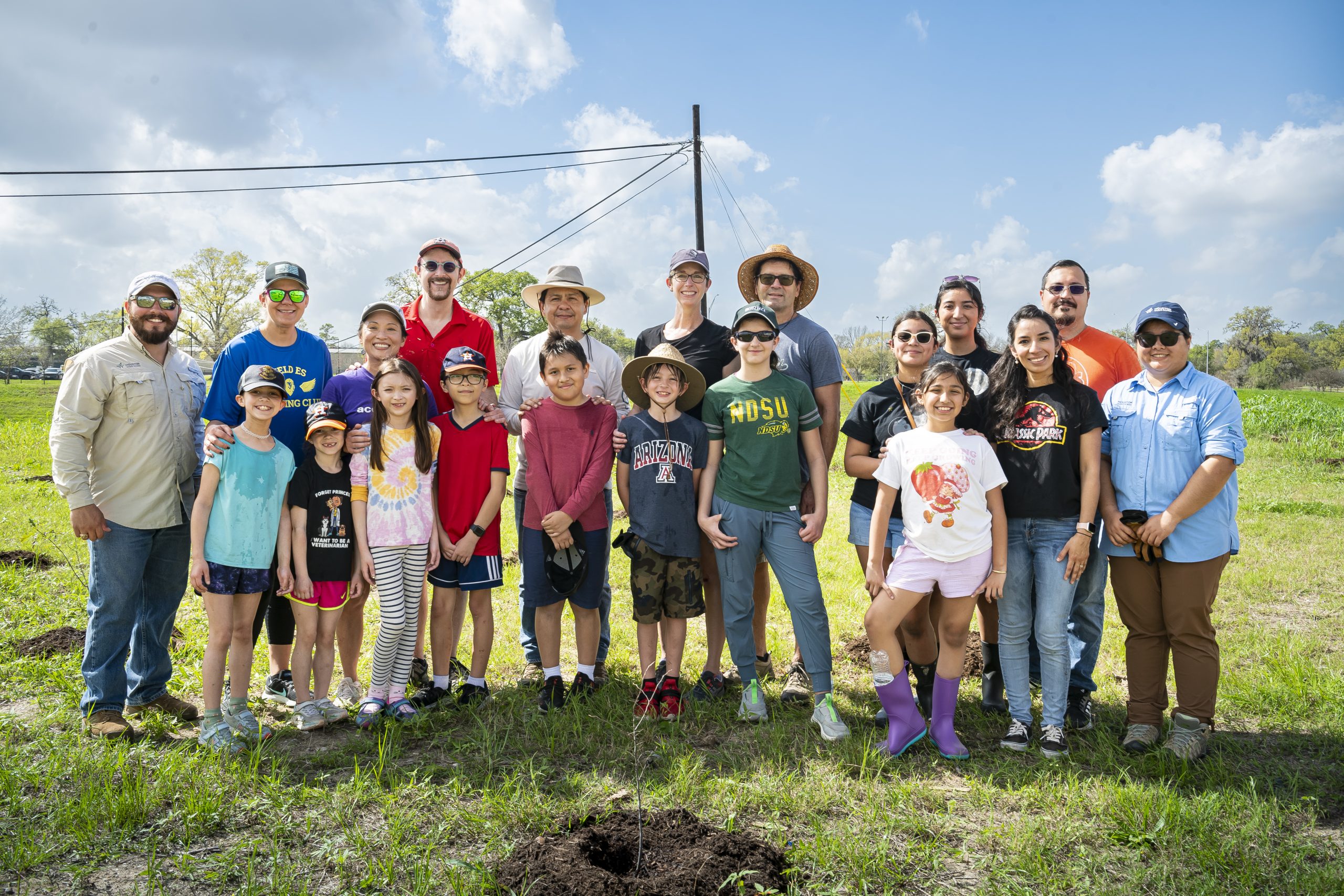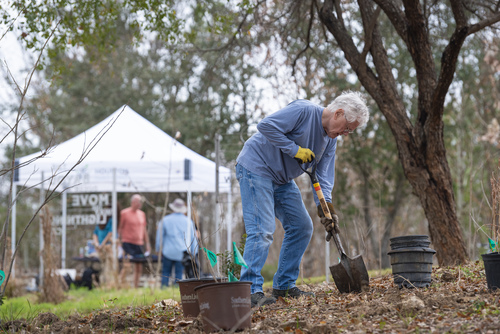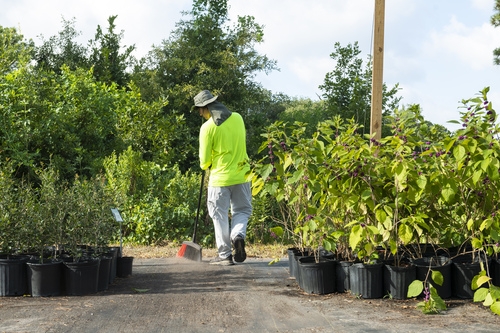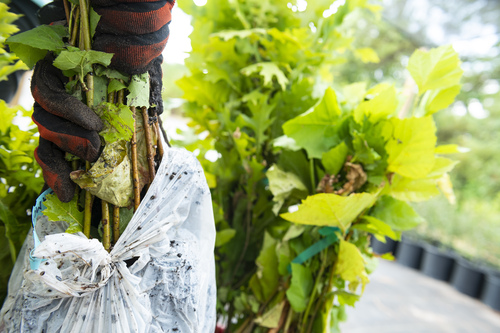PUBLISHED: January 2024 By HPB Conservation Technician, Christina Lee, MWS
The heat and drought last summer were not only difficult for Houstonians, but equally stressful for our trees. Many of them, especially younger trees, did not survive. In the wake of urban expansion and the challenges posed by climate change, Houston has witnessed the depletion of its greenspaces. However, we have collectively responded with resilience and determination, embarking on ambitious reforestation projects to restore the balance between urban development and environmental conservation.
Reforestation isn’t just about planting trees; it’s about investing in the health and well-being of our city and its residents. Trees play a crucial role in easing the urban heat island effect, providing shade, and cooling the environment. As Houston faces rising temperatures, the strategic planting of trees helps create more sustainable and comfortable urban spaces for its residents.
Moreover, reforestation contributes to improved air quality by absorbing pollutants and releasing oxygen. It also contributes to improved water quality by catching and filtering stormwater, preventing soil erosion, and mitigating the impacts of flooding. Houston’s commitment to green initiatives aligns with a broader movement towards creating healthier, more livable cities.



Reforestation not only creates a sustainable and vibrant city for the residents of Houston, but it also provides habitat and food for the wildlife and pollinators in our urban jungle. It creates green corridors that connect fragmented habitats. These corridors act as highways for wildlife, allowing them to move freely across the city and promoting genetic diversity within populations, or act as rest stops for migrating birds and insects.
It may seem counterintuitive, but winter is the best time to plant trees in Houston. Trees are typically dormant during the winter months. This means they are in a rest phase with slowed growth and reduced energy consumption. Planting during dormancy allows the tree to focus on root establishment without the stress of supporting new foliage. When spring arrives, the tree can direct more energy toward above-ground growth.
While non-native trees may provide the much-loved fall colors, native trees provide more benefits to our local ecosystem.
- Adaptation to Local Conditions: Native trees are adapted to the specific climate, soil, and environmental conditions of a region. They have evolved over time to thrive in local ecosystems, making them well-suited to the area’s natural challenges such as pests, diseases, and climate variations.
- Water Conservation: Native trees are generally more adapted to local precipitation patterns and soil types, which can reduce the need for additional watering once established. This adaptation contributes to water conservation efforts and supports sustainable landscaping practices.
- Pollinator Support: Native trees often have co-evolved relationships with local pollinators, such as bees and butterflies. Planting native trees provides these essential pollinators with a familiar and reliable food source, contributing to the health of pollinator populations.
- Reduced Maintenance Needs: Native trees are generally well-adapted to local conditions, requiring less maintenance than non-native species. Once established, they often thrive with minimal intervention, reducing the need for fertilizers, pesticides, and excessive watering.
- Climate Resilience: As climate change introduces new challenges, native trees are more likely to adapt and survive in the face of shifting climate patterns. They have developed resilience to the historical climate of the region, making them potentially more robust in the face of environmental changes.



You can actively contribute to the success of reforestation. A few ways to do that include planting native trees and plants in your yard and communal spaces, educating yourself and your community about the benefits of preserving greenspaces in urban areas, or joining the Houston Parks Board Green Team.
Houston’s reforestation story is a testament to the power of community and shared responsibility. As we witness our city transform into a greener, more resilient space, let’s remember that each tree planted is a commitment to a better future. Join Houston Parks Board and your fellow Houstonians to ensure a more resilient and sustainable future for generations to come.
